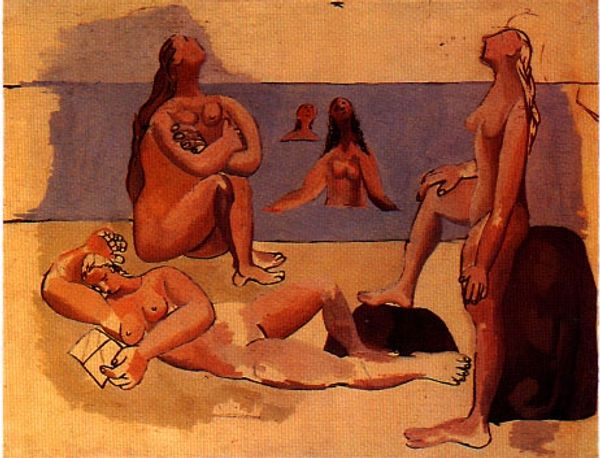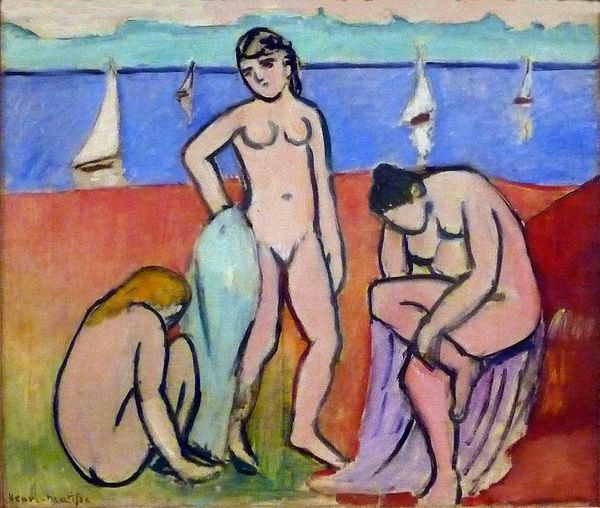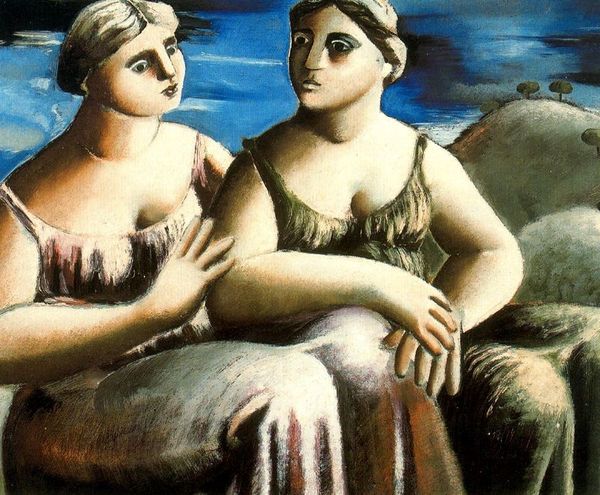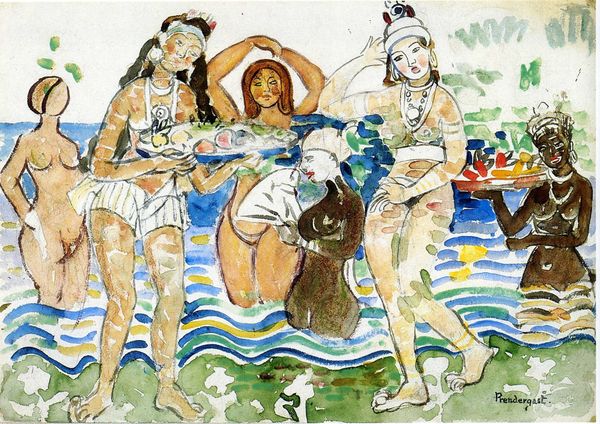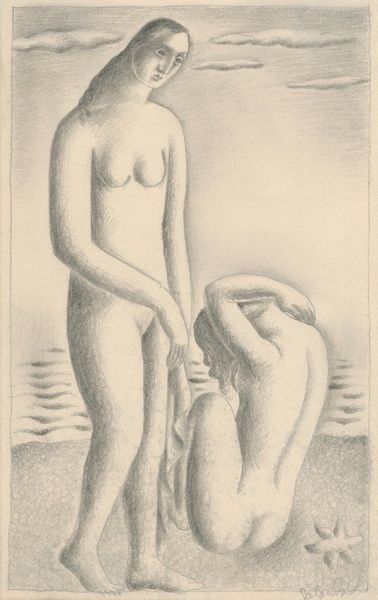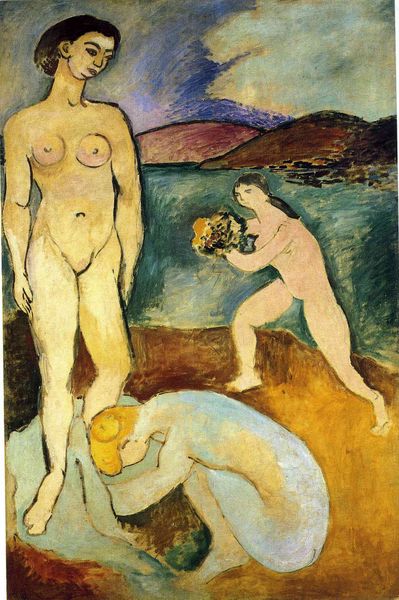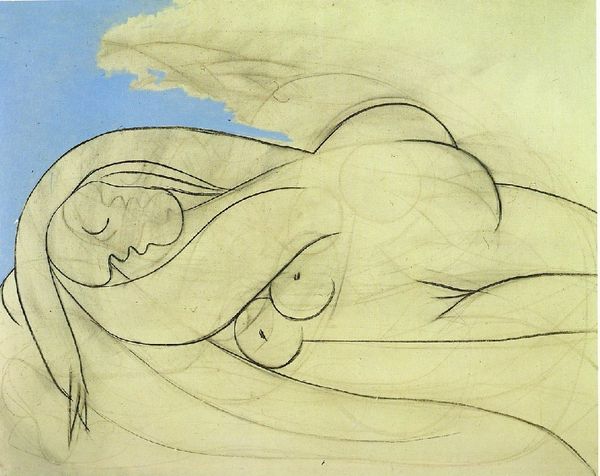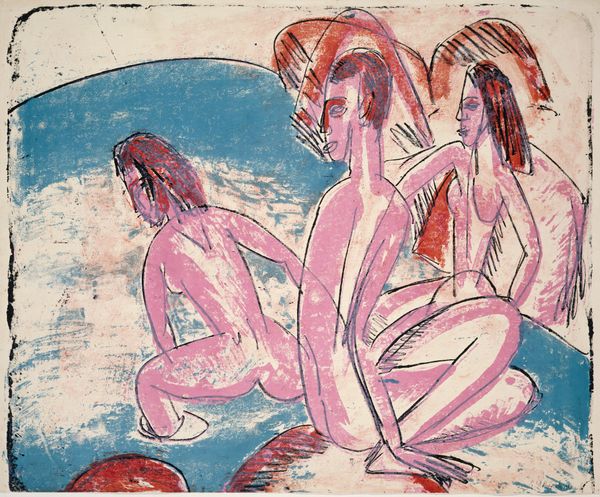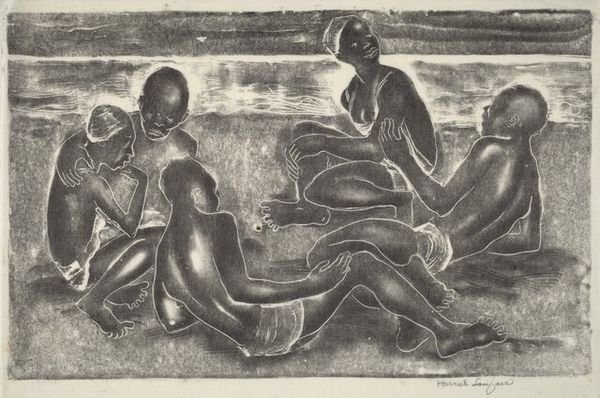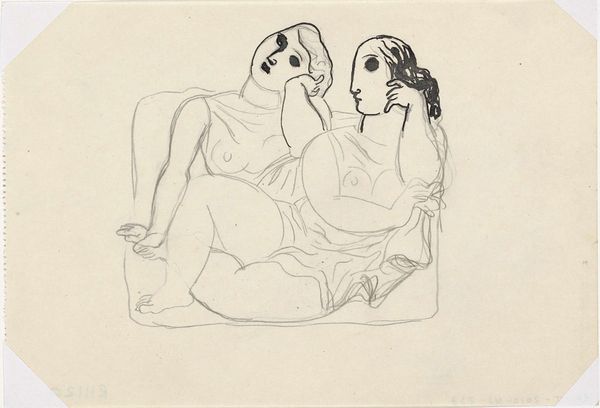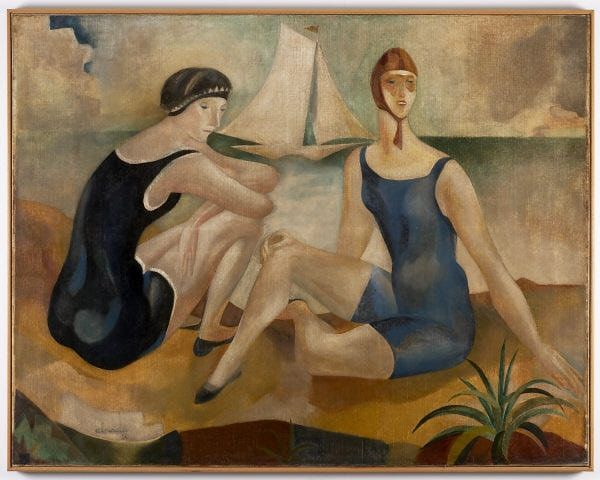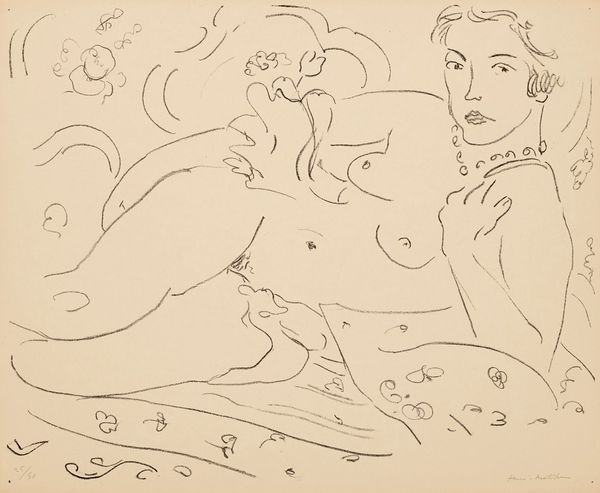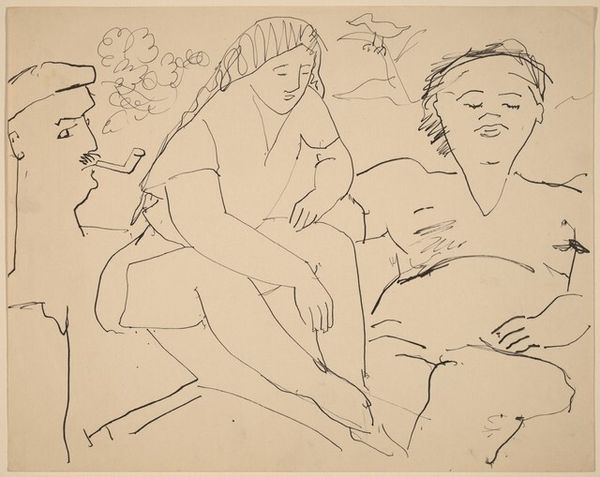
drawing, impasto
#
drawing
#
cubism
#
landscape
#
figuration
#
impasto
#
surrealism
#
nude
Dimensions: 57.5 x 72 cm
Copyright: Public domain US
Editor: We're looking at Picasso's "Bathers" from 1920, a drawing featuring simplified figures in an outdoor setting. There's something almost dreamlike about its composition. How do you interpret this work, considering its historical context? Curator: This piece strikes me as an exploration of female representation and the gaze within art history. Picasso, emerging from the shadow of early Cubism, is still grappling with how to depict the human form. Who is invited to view these nudes? Consider the period: post-World War I, women's roles were in flux. How does Picasso acknowledge or challenge these shifting identities? Editor: So, you're suggesting the artwork goes beyond just depicting women and invites commentary on their place in society? Curator: Precisely! These figures aren’t individuals but rather symbols, their bodies presented for observation, yet seemingly detached from conventional objectification. Is there something subversive in how the artist blends classical references with Cubist distortion? Editor: It’s interesting to think about subversion within something that, on the surface, seems like a classical nude scene. Curator: Right. We have to ask ourselves, is Picasso commenting on or complicit with the patriarchal structures of his time? It is important to note his tendency to both deconstruct and idealize the female form and reflect on what that tells us about the era. Editor: This definitely gives me a new lens through which to consider not just this drawing, but similar works from that period. Curator: Indeed. By analyzing its formal elements alongside its social context, we gain deeper insights into both the art and the world it reflects and refracts.
Comments
No comments
Be the first to comment and join the conversation on the ultimate creative platform.
